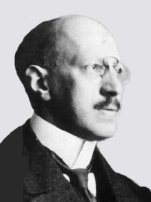|
變異的性行為
|
|
歷史背景 3:
性學應運而生
|
|
 |
|
愛文·布洛赫
(Iwan
Bloch,1872-1922)
德國皮膚病學家,把性學從科學角度提出了自己的概念。1913年,他與馬格勒斯·赫希菲爾德以及其他數位同僚創建了世界上第一個性學協會。 |
|
Iwan Bloch
(1872-1922) a German dermatologist, developed the concept of sexology as a science in
its own right. In 1913, he founded the first sexological society in Berlin together with
Magnus Hirschfeld and several other colleagues. |
|
|
在19世紀,當精神病學家著手研究人類的性行為的時候,他們開始假定大多數人的性行為是“正常的”,而且假定少數人的“性倒錯(perversion)”或多或少與長期以來由教堂所譴責的罪過和墮落是可互換的。可是,當深入研究就毫無疑問地顯示人的性興趣種類繁雜,於是,醫生們就連忙對每一項新的發現進行命名、歸檔和分類。新個案研究素材不斷地積累下來,在“性病理學(sexual
pathology)”的病名中排列了冗長的一串列表,這些病名是一些帶著發音奇特的希臘語或拉丁語名稱——從“性虐狂(algolagnia)”到“嗜獸癖(zoophilia,動物之性欲性戀)”,不一而足。但是,顯而易見,這個全然無止境的病名列表簡直就是完全不同的大雜燴,而且對任何一種所謂的病案沒有什麼規範的治療措施。與一般的疾病不同的是,依據個案不同,對同樣的診斷不得不使用不同的治療措施。最糟糕的是,大多數時候,這些治療措施證明都歸於失敗。
面對這種情形,就需要新的研究思路和研究方法,於是一門嶄新而專門的學科“性的科學”應運而生,這是集自然科學和社會科學的研究方法於一體的學科:性學[1](sexology)。正如它的創立者愛文·布洛赫所指出的那樣:
“性……的雙重本性……,它的生物和文化方面的特性,就其自身的角度看,必須要(把它)創立成一門獨立的科學,即性學(sexology);這門科學不再被當作任何其他科學的附屬物……。在這個學科領域裏,通過純醫學-臨床的研究方法,如果撰造帶有奇怪發音的外國語術語,人們相信這會引導我們豐富這個科學體系……。性(sexuality)的這種純粹的醫學(而不是精神病的)的觀點……對人類生活的其餘所有方面來說,尚不足以瞭解性的多邊關聯關係。這些多邊關聯關係從其總體上看,才是性學的研究課題”。[2]
|
|
|
|
Variations in Sexual Behavior |
|
Historical Background 3: Sexology |
|
When, in the 19th century, psychiatrists began to study human sexuality, they started with the assumption that most of it was “normal”, and that the few “perversions” were more or less identical with the sins and vices long deplored by the Church. However, when a closer look revealed an unsuspected variety of sexual interests, the doctors promptly proceeded to name, list and classify every new discovery. A steady stream of new case studies produced an ever-lengthening list of “sexual pathologies” with new strange-sounding Greek or Latin names - from “algolagnia” (erotic love of pain) to “zoophilia” (erotic love of animals). At the same time, it became clear that this sheer endless diagnostic list represented a hodge-podge of very disparate elements, and that there was no standard treatment for any of them. Instead, depending on the individual case, one had to apply different therapies for the same diagnosis. Worst of all, most of the time, they proved unsuccessful.
In this situation, a new approach was needed, and it was provided by a new, special “science of sex” that combined the methods of both the natural and social sciences: Sexology. As its founder
Iwan Bloch put it:
|
“The double nature of ...sex…, its biological and cultural aspect, (makes it) necessary to found sexology as a science in its own right, which must no longer be seen as an appendix of any other science… Where this would lead us has been shown by the purely medical-clinical approach of (those who) believed they had enriched science when they had only coined new foreign-sounding terms…The purely medical (let alone psychiatric) view of sexuality... is not sufficient to understand the many-sided relationships of sex to all other spheres of human life. These relationships in their totality are the subject of sexology”. 1
|
|
1. Iwan Bloch, Die Prostitution, vol. I, Berlin: Louis Marcus 1912, pp. vii-viii. |